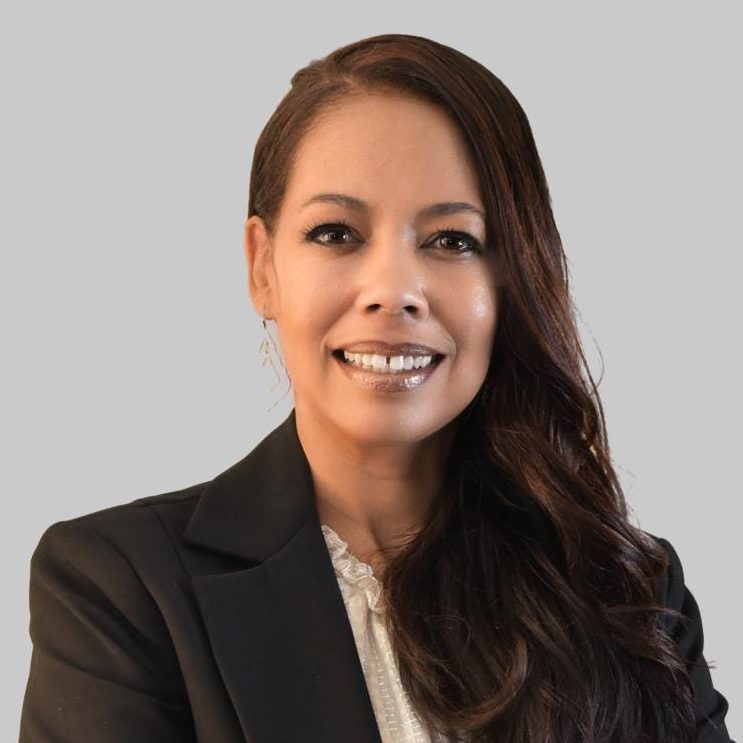While many companies have been playing catch up when it comes to achieving diversity, equity and inclusion goals, Intel has been measuring its DEI efforts for more than a decade. The Silicon Valley microprocessor giant says it achieved its 2020 goal of reaching full representation of women and underrepresented minorities in its U.S. workforce two years ahead of schedule, and in January 2019, it achieved 100% gender pay equity globally.
Ahead of Martin Luther King Jr. Day on Monday, HRE spoke with Dawn Jones, the chip maker’s chief diversity and inclusion officer, to discuss how to build DEI in a global pandemic, how the company measures success and what Intel is prioritizing for the coming year.
HRE: What are your priorities and predictions for the year ahead, particularly as all employers face talent challenges associated with the Great Resignation?
Jones: It is more important than ever to prioritize our employees and ensure we are fostering a culture of inclusion globally. The Great Resignation has shown us that employees are not going to stay at a company that does not treat them with respect and equality and offer the flexibility needed in these unprecedented times. Therefore, it is critical for us to listen to what they need and how to best support them. I predict that this will only become increasingly important to the success of all companies and organizations. We want to provide a dynamic, flexible and inclusive workplace that enables all employees to do their best work. Doing so will support our culture as a results-driven organization and enable our teams to execute with speed.
Related: 4 tips to help you retain and hire employees in 2022
We are also committed to advancing diversity and inclusion at every level in our company and the broader industry. As we look to the road ahead, we will continue to prioritize and integrate diversity and inclusion into everything—our culture, systems, leadership expectations and performance metrics—to ensure our future workplace works for everyone. Additionally, we will continue to lean into our 2030 corporate responsibility goals.
HRE: Please tell us about the Alliance for Global Inclusion and its mandate.

Dawn Jones, chief diversity inclusion officer for Intel
Jones: In 2021, Intel, in partnership with Dell, NTT DATA and Snap Inc. started the Alliance for Global Inclusion, which is focused on making progress in four critical areas: leadership representation, inclusive language, inclusive product development and STEM readiness in underserved communities. The Alliance for Global Inclusion also releases an annual inclusion index, which serves as a benchmark for companies to track D&I improvements and provides information on current best practices and opportunities to improve D&I outcomes across industries. The goal of the alliance and the inclusion index is to focus on shared responsibility, align on a consistent system of measurement to better track progress, and address persistent gaps while identifying areas for improvement.
Related: Are HBCUs a key to diversifying the talent pipeline?
Since launching in April 2021, the alliance has doubled in size, welcoming new members Applied Materials, Lam Research, Micron, Equinix and TEL US. As part of its focus on leadership representation, the alliance partners also collectively developed—and are committing to adopting—a set of guidelines to encourage board diversity through set metrics, transparent reporting and additional recommended practices.
Recently, the alliance also sent an open invitation for business leaders from across industries to participate in this year’s inclusion index survey by March 14. The next iteration of the inclusion index and related findings will be released in the spring and highlight insights on D&I practices and areas for improvement across all industries.
 HRE: What role can DEI play in the Great Resignation? Are overlooked people—women, POC, LGBTQ+—more likely to look for greener pastures?
HRE: What role can DEI play in the Great Resignation? Are overlooked people—women, POC, LGBTQ+—more likely to look for greener pastures?
Jones: Culture is an essential part of any company. At Intel, a big focus is integrating inclusivity into employee retention efforts and candidate recruitment to ensure the company is welcoming to more than 110,000 employees spread all over the globe.
The world is changing and evolving. Companies, I think, work better, have a better opportunity for innovation, to take their products further, if they are listening to their customers and their stakeholders, and they are reflective of them. This is important for us because we want top talent. Gender, ethnicity, ability, veteran status, that doesn’t matter. We want the best and the brightest. And we know that the best and the brightest is not a homogeneous group, it doesn’t all look the same. And for years, it has.
HRE: How has Intel been able to promote DEI during a global pandemic and in a remote work environment?
Jones: Intel’s response to the pandemic has been grounded in data-driven decision-making and embracing uncertainty. In an April 2021 survey, 90% of our employees shared that they preferred a hybrid workplace when offices reopen, which is what we announced as our approach in November 2021.
While listening to our employees is critical, we also recognize the need to ensure that hybrid and remote working models are inclusive and support everyone long-term.
Inclusion is one of our central values, and we must create an inclusive culture to attract, motivate and retain, and recruit the best employees. Examining opportunities within the company to progress employees and give them room for growth [is also vital.]
It’s also important for companies to address these challenges through their systems such as onboarding, acquisition and progression to ensure bias is minimized since these systems support employees throughout their careers.
HRE: What tech do you use to track DEI results? What data do you use to measure success?
 Jones: Every year we publish our Corporate Responsibility Report and provide a comprehensive update on our diversity numbers. The data team that tracks that internally and externally sits within my organization. The data varies every year, but we focus on an increase in representation where we have gaps, healthy progression of internal talent and an increase in favorable sentiment as some of our success measures.
Jones: Every year we publish our Corporate Responsibility Report and provide a comprehensive update on our diversity numbers. The data team that tracks that internally and externally sits within my organization. The data varies every year, but we focus on an increase in representation where we have gaps, healthy progression of internal talent and an increase in favorable sentiment as some of our success measures.
We focus on a three-pronged approach: retention, progression and recruitment, all of which are critical to progressing.
We track diversity data for several communities, including our Black community, LatinX, Native American, women, employees with disabilities, LGBTQ. We also publish our pay data as well.
Moving forward it is critically important to create solutions based on the current environment and forecasted trends. We are also always willing to pivot and improve to achieve the best outcomes.
HRE: We are starting to see the rise of job titles such as Chief Belonging Officer. What does this job title mean and what can these professionals bring to the companies they work for?
Jones: We do not have that title at Intel. My title is Chief Diversity and Inclusion Officer and VP of Social Impact. Because belonging sentiment and inclusion are interlinked, I can see why companies want to make this clear in the work they are driving in this space.
We need to create a culture where everyone feels welcome and where employees can bring their full experiences and authentic selves to work every day.